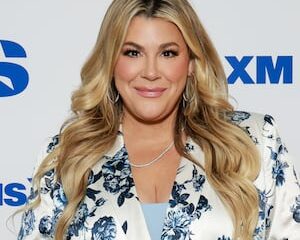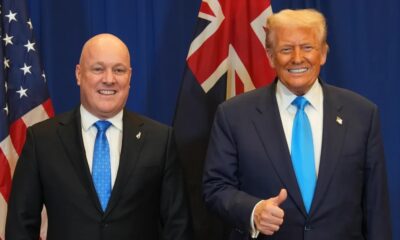Entertainment
New Zealand’s TV Ratings System Explained: How Shows Are Classified

Television programming in New Zealand is classified through a structured system that communicates age appropriateness and content warnings. The process, overseen by the Broadcasting Standards Authority (BSA), aims to ensure that viewers are informed about potentially objectionable material. Each network follows its own guidelines, but they generally align with the BSA’s standards.
The decision-making process for television ratings involves both self-regulation by broadcasters and oversight from the BSA. According to Stacey Wood, the BSA’s chief executive, broadcasters primarily classify programming themselves. If viewers complain about misclassifications, the BSA reviews the content. In the past five years, only six or seven complaints have been upheld regarding inappropriate time slots for specific shows.
Understanding the Classification Process
Local content is always assessed by the broadcaster, while many international shows arrive pre-classified. Nicola van der Meijden, content director at TVNZ, indicates that a team of specialists evaluates content, although established formats, like game shows, may receive a blanket classification after sampling a few episodes.
At Three, senior broadcast standards specialist Robyn Nelson mentions that some international programs are initially rated but are still reviewed to verify their appropriateness. This classification works in tandem with designated time bands to ensure age-appropriate viewing. For instance, programmes rated 16 can air after 20:30, while those rated 18 may be shown after 21:30.
In contrast, subscription services such as Sky do not impose time bands, allowing content to air at any time. Wood explains that free-to-air broadcasts have different responsibilities since they are accessed without subscription, making viewer control less stringent.
Criteria for Rating Shows
Broadcast ratings are determined by evaluating language, violence, and sexual content. Context plays a significant role in how standards are applied. Wood highlights that the intent behind language can influence its perceived offensiveness.
“You can think of times where you’ve heard someone say something, and the intent behind it makes it offensive; whereas, if the word is used in a more playful manner, then it might be less likely to cause offence,”
Wood states.
Jaime Smith, editorial manager for Whakaata Māori platforms, emphasizes that classifications hinge on the frequency and context of profanity. For example, a single use of a particular expletive may result in a programme receiving a PG rating, while multiple occurrences could lead to a harsher classification.
The guidelines indicate that sexual content automatically receives an M rating, as do violent scenes. A spokesperson for Sky clarifies: “A PG certification might include some nudity in a non-sexual context, whereas 18 might include lengthy, graphic, and explicit material.”
Censorship and Changing Standards
Censorship in New Zealand television is infrequent, although networks occasionally mask offensive language or make slight edits to comply with time band restrictions. Nelson notes that Three strives to limit censorship but may adjust content for younger audiences, particularly during school holidays.
The BSA collects data on viewer perceptions of offensive language through surveys. The latest survey, conducted in March 2021, reveals shifts in societal attitudes towards certain words. Terms previously deemed offensive have fallen out of favor, indicating a changing landscape in broadcasting standards.
Wood adds that while some complaints are received regarding bleeped language, the BSA has guidelines for complaints unlikely to succeed, particularly concerning low-level offensive language.
Overall, the television rating system in New Zealand reflects an ongoing effort to balance viewer protection with the evolving landscape of media content. As societal norms continue to change, so too does the approach to classification and censorship in broadcasting.
-

 Sports2 months ago
Sports2 months agoNetball New Zealand Stands Down Dame Noeline Taurua for Series
-

 Entertainment2 months ago
Entertainment2 months agoTributes Pour In for Lachlan Rofe, Reality Star, Dead at 47
-

 Entertainment3 weeks ago
Entertainment3 weeks agoNew ‘Maverick’ Chaser Joins Beat the Chasers Season Finale
-

 Sports2 months ago
Sports2 months agoSilver Ferns Legend Laura Langman Criticizes Team’s Attitude
-

 Politics4 weeks ago
Politics4 weeks agoNetball NZ Calls for Respect Amid Dame Taurua’s Standoff
-

 Entertainment2 months ago
Entertainment2 months agoKhloe Kardashian Embraces Innovative Stem Cell Therapy in Mexico
-

 World3 months ago
World3 months agoPolice Arrest Multiple Individuals During Funeral for Zain Taikato-Fox
-

 Sports2 months ago
Sports2 months agoGaël Monfils Set to Defend ASB Classic Title in January 2026
-

 Entertainment1 month ago
Entertainment1 month agoTyson Fury’s Daughter Venezuela Gets Engaged at Birthday Bash
-

 Sports1 month ago
Sports1 month agoHeather McMahan Steps Down as Ryder Cup Host After Controversy
-

 World1 week ago
World1 week agoSevere Winds Hit New Zealand, Over 100 Flights Canceled
-

 Entertainment1 month ago
Entertainment1 month agoTyson Fury’s Daughter Venezuela Gets Engaged at Birthday Bash



















